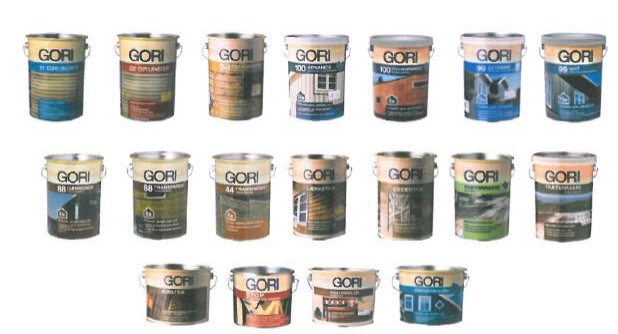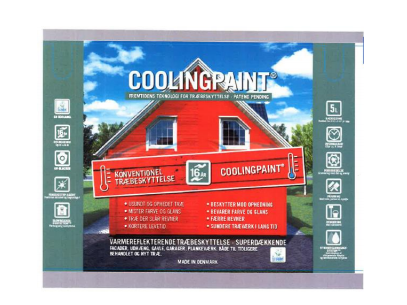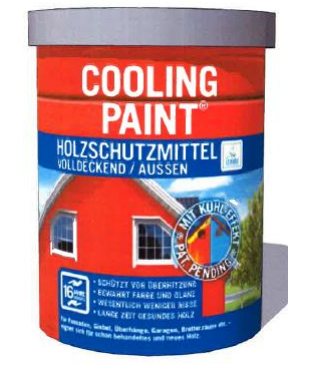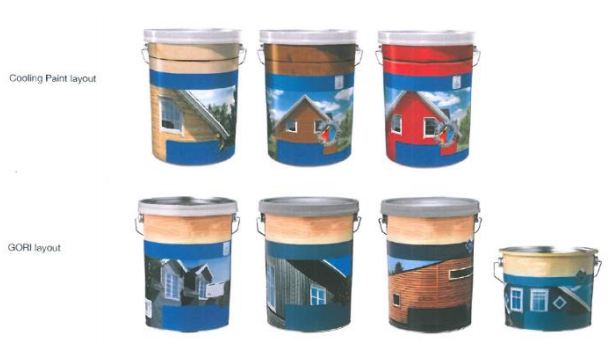In July 2017 the Maritime and Commercial High Court granted Danish company Dyrup A/S a preliminary injunction without security against Nowocoat International A/S for design and layout infringement of Dyrup's wood protection products.
Dyrup, which is owned by PPG Industries, has operated in the Danish wood protection products market since 1928. One of its most reputed brands is Gori. It was documented in this case that GORI has a 48% market share in Denmark. Since 2008, Gori products have used the same design and layout (Figure 1).

Figure 1
Nowocoat developed the product Cooling Paint and applied for the corresponding trademark in May 2016. From 2015, Nowocoat had worked on developing the product's design. During Summer 2016, the following design was released (Figure 2).

Figure 2
The design was further developed for the German market (Figure 3).

Figure 3
In March 2017 this led to the products below (Figure 4) were launched on the Danish market.

Figure 4
Before launching its Cooling Paint product on the Danish market, Nowocoat entered into dialogue with Dyrup to see whether its products could become part of the Gori product series. Following the launch of Cooling Paint and its contact with Dyrup, Nowocoat added stickers to its products (Figure 5).

Figure 5
As part of the case, the design of the Cooling Paint packaging was compared to the Gori packaging without any text (Figure 6) and other competitors on the Danish market (Figure 7).

Figure 6

Figure 7
The court found that it had been proven that Dyrup had used the same design for all of its Gori products since 2008. The design comprised:
- the image of a broad beam at the top;
- the image of a narrower beam below;
- an environmental picture in the middle; and
- a text box at the bottom, which becomes smaller towards the right-hand side.
Further, the image of the narrow beam and the text box share the same colouring and the broad beam is wood coloured. Considering the market, the Gori brand's market share and Dyrup's advertising, the court found that Gori products have a commercially distinctive character and are protected according to the Marketing Practices Act due to the design of their packaging.
Following this view, the court had dissenting opinions. The majority found that Cooling Paint, as launched on the Danish market, shared the same basic elements and had the same design as Gori products. Thus, the majority considered Cooling Paint to be a close imitation of Gori products and that this similarity was intentional and aimed to free-ride on the Gori brand's reputation. The dissenting opinion found that:
- the function of the centrally placed trademark GORI could not be disregarded;
- its well-known character would lead to no confusion between the two products; and
- this applied to Cooling Paint products featuring stickers.
On this basis, a preliminary injunction was granted.
For many years in Denmark, there has been case law for and against the argument that "because a trademark is well-known there can be no confusion". This is an issue that can still result in different conclusions, as seen in the decision above.
From a strict trademark perspective, this argument should not be given any weight, as the criteria for finding confusing similarity with a well-known trademark are different. However, trademark law was not part of the above case, which was based solely on the Marketing Practices Act. Notably, the majority of judges found that it was possible for end-consumers to disregard a well-known trademark and recognise a product only by its design, while also confusing it with another product. While the Gori brand is well-known in Denmark, it is unclear whether this reputation extends to the product design itself and whether this decision would be applicable for other products in future.
For further information on this topic please contact Anette Rasmussen at Awapatent A/S? by telephone (+45 43 99 55 11) or email ([email protected]). The Awapatent A/S? website can be accessed at www.awapatent.com.
This article was first published by the International Law Office, a premium online legal update service for major companies and law firms worldwide. Register for a free subscription.



